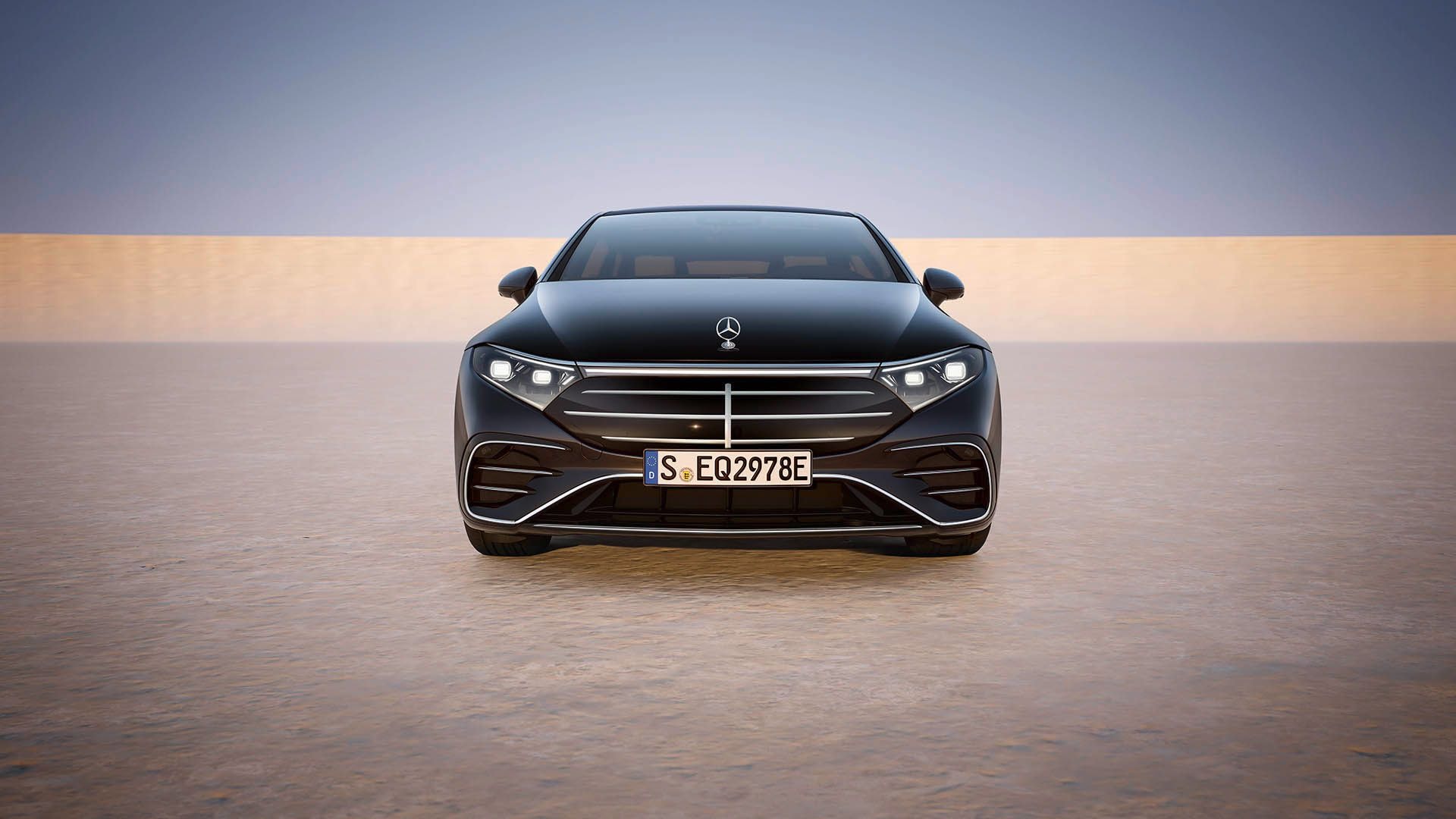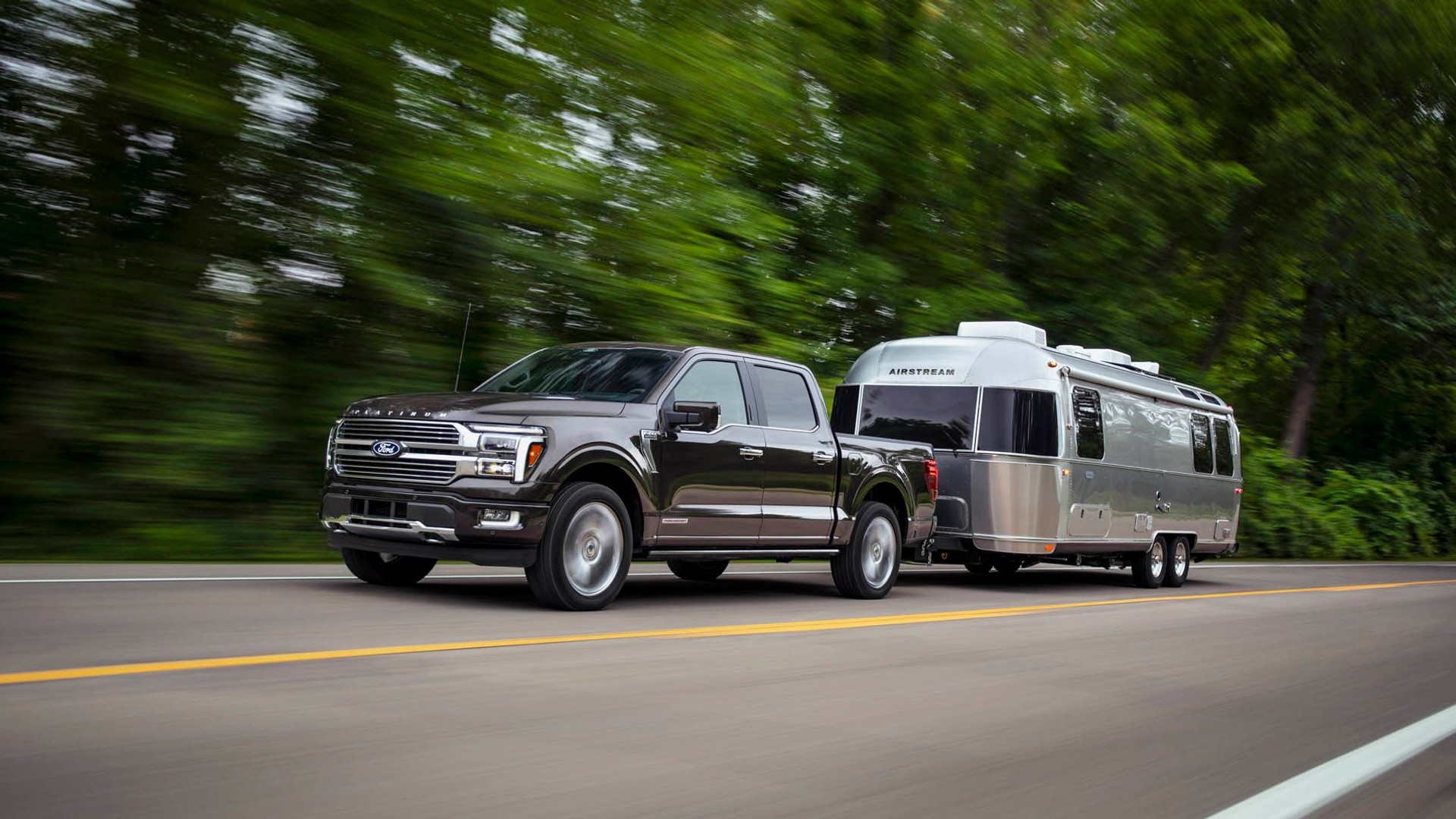The 2020 Porsche Taycan is the German sports-car maker’s first all-electric car. It’s also the most serious competitor yet to the Tesla Model S, the groundbreaking luxury electric car that’s in its seventh year on sale.
A good deal of information about the Taycan electric sedan has already been released or leaked. Much of its design, powertrain specs, pricing, and other aspects were published well before its global launch on Wednesday.
Still, we learned several things that surprised us about the 2020 Taycan. They came during a comprehensive technical briefing held for media two weeks ago at the Porsche Experience Center in Atlanta.
2020 Porsche Taycan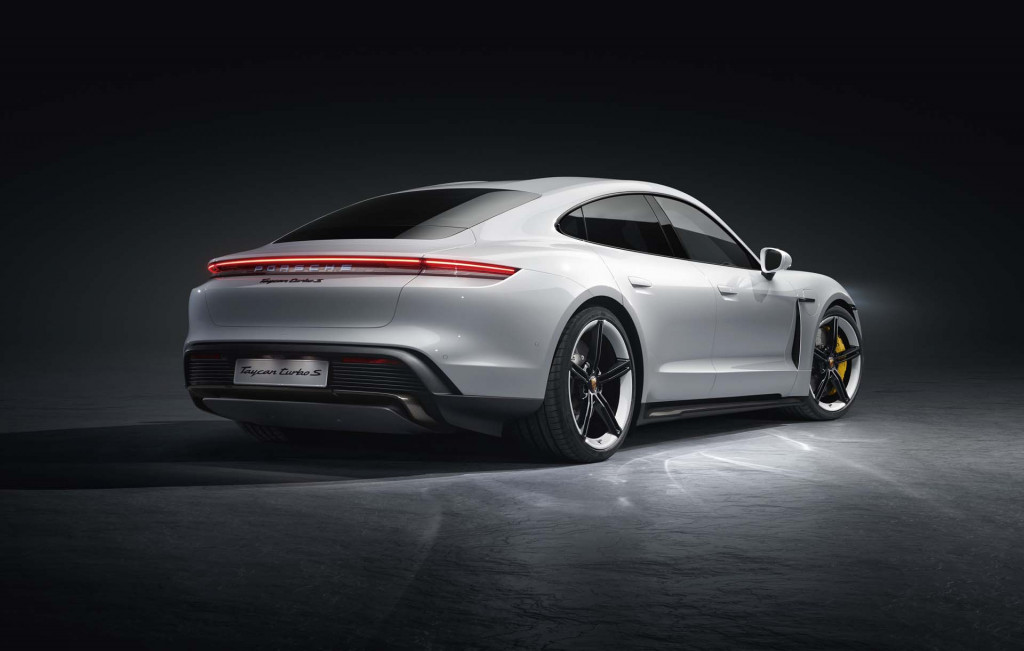
(1) Nothing in the design shows it’s electric
The Porsche Taycan was never going to be a Nissan Leaf, and that’s a good thing. It looks like a Porsche, slightly reproportioned. In fact, it could easily be the next-generation Panamera: a lower, wider, and sleeker large sedan.
We expected some subtle styling cues on the exterior to indicate its pioneering powertrain. Perhaps a blue-tinted badge, or a new signature headlight shape for electric vehicles. But there’s absolutely nothing. The sole giveaways this is not a gasoline vehicle are the lack of tailpipes and the twin charge ports in the front fenders, rather than a rear fuel filler.
Onlookers unfamiliar with the Porsche range will likely never know what powers it. And Porsche wants it that way.
2020 Porsche Taycan preview
(2) Regenerative braking (mostly) requires the brake pedal
This is the biggest surprise, and it was received with some shock by reporters specializing in electric cars. The Taycan has enormously powerful regenerative braking, up to 265 kilowatts, meaning the friction brakes generally come on only in panic stops under most driving conditions, even at high speeds.
But the sole way to get that regen is to hit the brake pedal. Lifting off the accelerator just causes the Taycan to glide, as if it had a conventional automatic transmission. One-pedal driving is impossible—deliberately. (At least it’ll make racing the Taycan easier, since track drivers don’t want lift-off regen.)
In a separate article [linked above in the title of this section], Bengt Halvorson delves into this decision and the reasons behind it. It fits with the other oddities to reinforce the point in our first point: Porsche wants this car to be just like any other car.
2020 Porsche Taycan
(3) It won’t initially charge at 350 kilowatts; it’s limited to 270 kw
When the Mission E concept appeared four years ago, the 800-volt architecture played a prominent role, as did the “15-minute recharge to 80 percent” mantra. Doing the math on the battery size, that translated to DC fast charging at up to 350 kw—or three times Tesla’s best back in 2015.
The Taycan will launch with fast charging at a maximum of 270 kilowatts, as a conservative measure for the life of its 93-kilowatt-hour battery pack. Whether that’s sustained or peak rate we won’t know until we see the shape of charge curves for the car charging in real conditions. As packs get larger in future years, said the carmaker’s Joachim Kramer, charging is possible up to 400 or 500 kw.
For purposes of comparison, the Tesla Supercharger V3 spec delivers sustained fast charging at 175 kw, and short peaks of charging as high as 250 kw. That is close to the theoretical maximum, Kramer suggested, for batteries using 400-volt charging, as Teslas do.
2020 Porsche Taycan
(4) 150-kw charging at CCS sites is an extra-cost option
This stunned us. Every Taycan can charge at up to 270 kw using the highest-power CCS charging stations that charge at 800 volts.
But North America will continue to have larger numbers of less-powerful CCS sites using 400 volts—the current ones at 50 kw, and increasing numbers of new ones at 125 kw for such cars as the Audi e-tron and Jaguar I-Pace, for instance.
If you want your Taycan to be able to use 400-volt CCS fast-charging above 50 kw, you'll have to pay extra for a modified onboard charger. Really.
2020 Porsche Taycan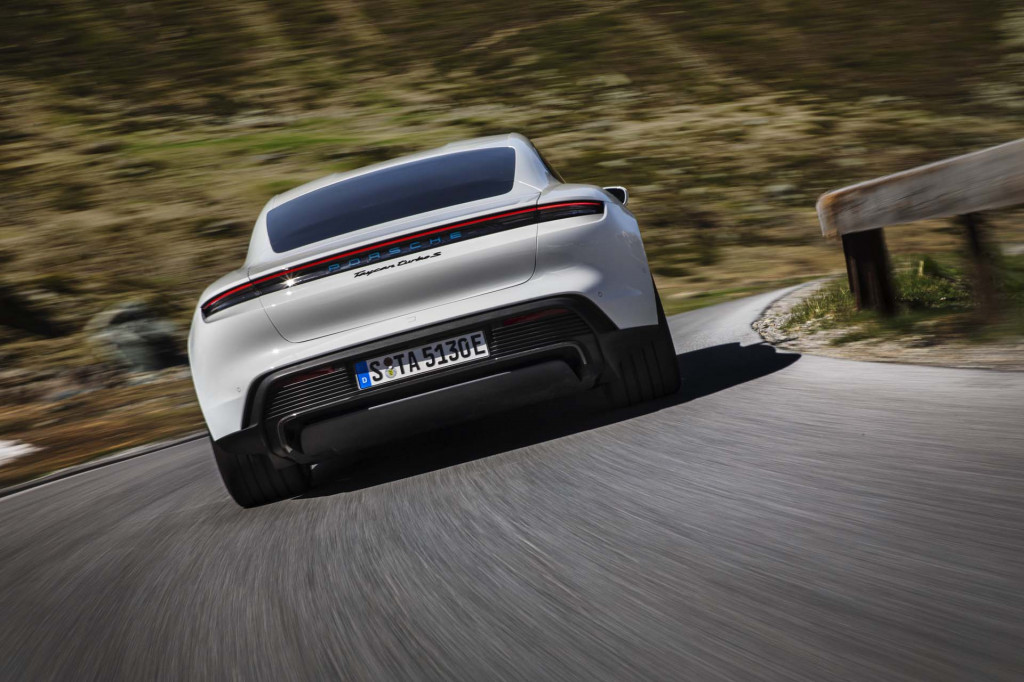
(5) Porsche really is calling the two versions of its first electric car Turbo and Turbo S
No version of the Taycan will ever have a turbocharger, a compressor that crams air into the intake of a gasoline engine at high pressure to produce more power. Yet the two Taycans are called Turbo and Turbo S.
The latter, following Porsche convention in lockstep, is more powerful than the former. There will likely be other Taycan models above and below them later on. Porsche thinks this will underscore the Taycan’s similarity to any other model in its lineup, and make it instantly understandable for its customers.
We think it’s bizarre, almost insulting to their intelligence. Many buyers, however, probably won’t think twice about it. And Porsche hangs onto other traditions long after their time. Its iconic model, the 911 sports car, still has an engine behind the rear axle—the only such design found anywhere in the world.
2020 Porsche Taycan preview
(6) The Taycan has charge ports on two sides
The electric Porsche has a Level 2 charging port in the left front fender on left-hand-drive models. But then it also has a combined DC fast charging and Level 2 port on the right-front fender.
The charging protocols used vary by region: CCS for North America and Europe in their respective versions, the Chinese GB/T standard in that country, and CHAdeMO in Japan.
Why not just one combined port? Porsche execs said it's for the convenience of the driver, to make it easiest to plug in at home or work by putting that port as close as possible to the driver's door. The DC fast-charging hardware is on the other side of the car.
The arrangement will be reversed for right-hand-drive models.
2020 Porsche Taycan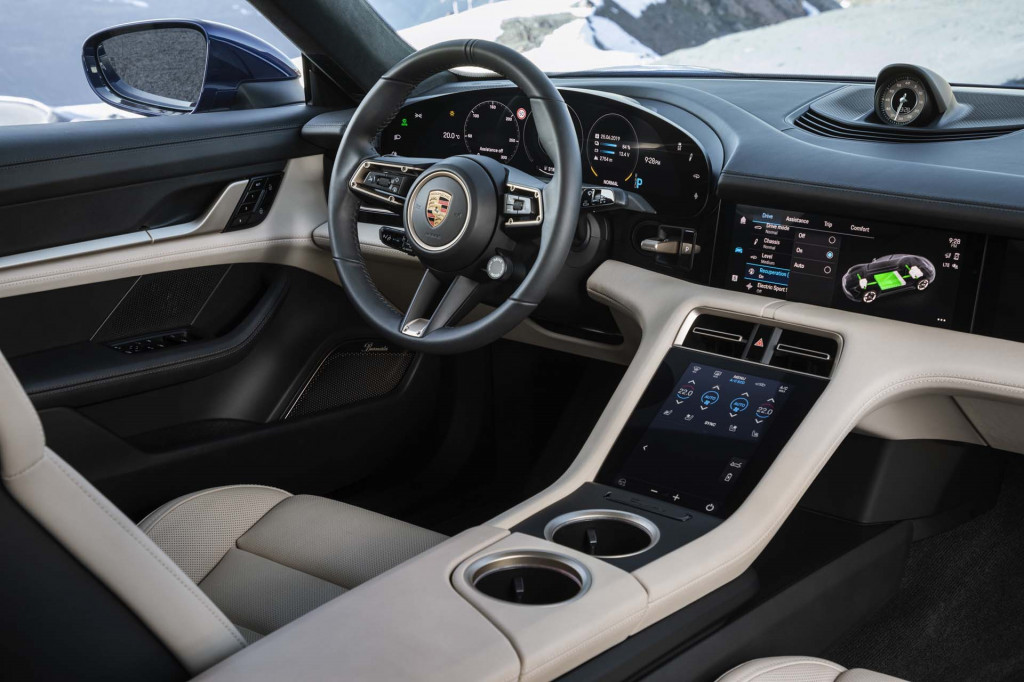
(7) Android Auto is (still) unavailable
A vast majority of Porsche buyers use mobile phones from Apple, according to the company’s data. That’s why it announced built-in Apple Music on the Taycan, which will presumably spread across other vehicles in the range.
But almost every maker launching a 2020 car offers not only Apple CarPlay but also Android Auto. It’s almost a single word at this point: Android-Auto-and-Apple-CarPlay-standard-on-all-models.
Porsche doesn’t—on any vehicle. It’s proudly, defiantly ignoring one in five of its buyers, those who would like to link their Android devices. Porsche sells cars that live up to buyers’ expectations—but in turn, Porsche buyers have to live up to the company’s expectations.
What does it all mean?
In the end, the 2020 Porsche Taycan was pretty much what we expected it to be: a fully electric, well-integrated, luxurious, fast addition to the company’s lineup of sports cars and sporty sedans and SUVs.
The points above stand out to any writer who’s covered EVs for a decade. But Porsche didn’t make battery-electric cars during that period, and it’s determined to engineer the Taycan the way it sees fit.

2020 Porsche Taycan
That translates to making it so similar to any other Porsche in every way—excepting the plug and battery rather than a filler pipe and gasoline tank—that it hopes drivers will entirely forget it’s an electric car. Instead, they will have a consistent Porsche experience no matter what model they drive.
That may underscore its supreme confidence in the car. Or perhaps it betrays a slight corporate squeamishness over the whole idea of electric cars. We’ll let you decide.
Disclosure: Porsche paid for airfare, lodging, and meals to enable Internet Brands Automotive to bring you this first-person report.










